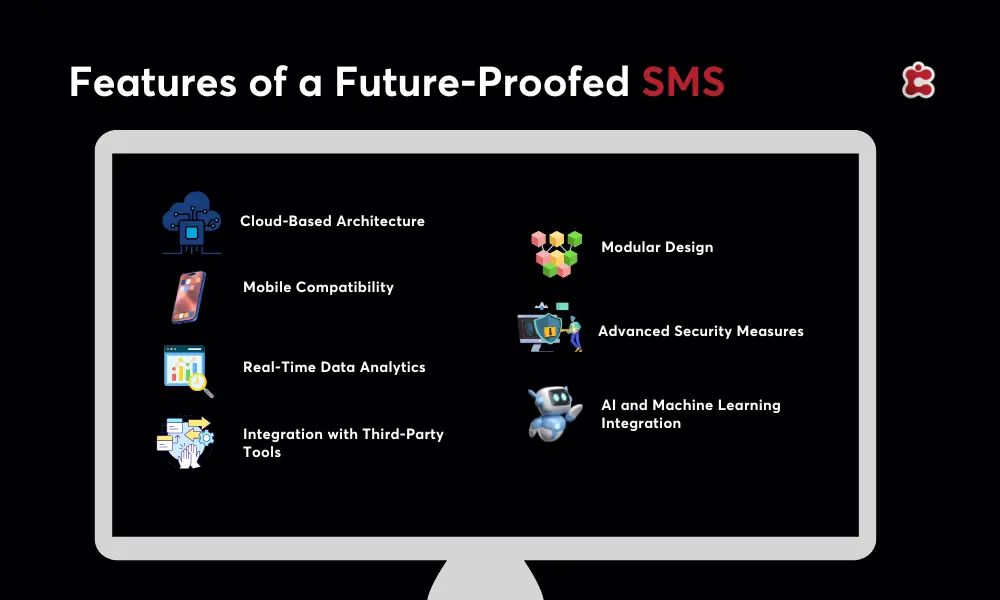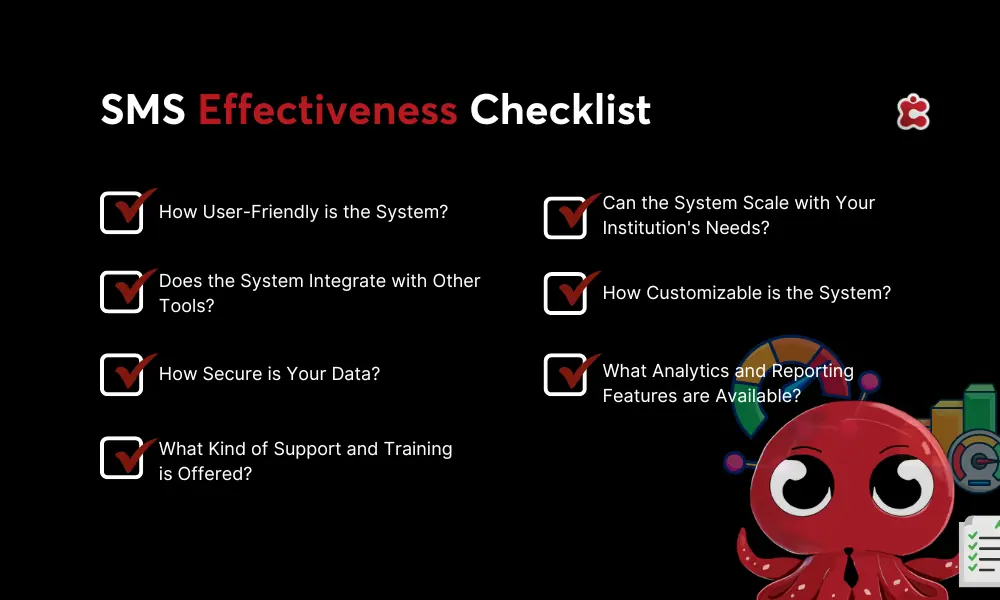From humble beginnings as simple attendance logs to becoming the lifeline of school operations, School Management Systems (SMS) have evolved in ways we couldn’t have imagined a decade ago. They’re no longer just for checking who’s absent or tracking grades. They’ve become essential tools that keep schools running smoothly, helping teachers teach and administrators stay on top of it all.
But what about 2025? What does the future look like?
We’ll dive into what’s coming next for SMS, and trust us—it’s exciting. Think of AI-driven insights that help spot when a student might need extra support before things spiral. Or SMS tools so intuitive and personalized that teachers, parents, and students will have everything they need at their fingertips, anytime. We’re talking about innovations in data security, real-time syncing with IoT, and modular platforms.
Let’s get into it.

AI and Machine Learning Integration in SMS
AI has been making waves in 2024, but by 2025, it’s set to change School Management Systems even further. Imagine having AI tools that don’t just assist but actually predict and personalize. With AI and machine learning embedded in SMS, schools can harness predictive analytics to identify when students might need extra support long before anyone notices a drop in performance. This means fewer students slipping through the cracks and more personalized interventions right when they’re needed most.
But AI isn’t just for academics. Think of those repetitive administrative tasks—grading, attendance tracking, scheduling—that eat up hours every week. With AI-driven automation, many of these time-consuming chores will become hands-off, freeing up teachers and administrators to focus on what they do best: supporting students. And because machine learning continuously improves, these systems will only get smarter, learning from past data to become more accurate and efficient over time.
Advanced-Data Security and Compliance Tools
As SMS evolves, so does the focus on data security. With sensitive information on students, teachers, and operations stored digitally, the stakes for protecting this data are higher than ever. With regulations like GDPR and FERPA tightening up, schools are feeling pressure to keep pace.
In 2025, advanced data security tools will be a must-have feature for any SMS. Schools can expect major advancements in encryption, making it far harder for unauthorized eyes to access data. Think of encryption as a super-secure lock on every piece of information, whether it’s a grade, attendance record, or health file. This “lock” ensures that only those with the right access can ever see or use the data.
Cloud-first and Modular SMS Platforms
The future of school management is moving to the cloud, and for good reason. Cloud-first, modular SMS platforms are making it easier than ever for schools to manage their systems without being weighed down by clunky, outdated software. By 2025, this shift to cloud-based solutions will offer schools flexibility, scalability, and ease of use—all critical as schools grow and adapt to new needs.
Then there’s modularity, a game-changer for schools with unique needs. Modular SMS platforms allow schools to pick and choose only the features or modules they truly need—like student attendance, grade reporting, or financial management—without paying for unnecessary extras. This flexibility keeps costs down and ensures schools have a system that feels tailor-made.
Classter combines cloud and modular solutions. Classter’s platform offers schools a highly customizable experience, empowering institutions to build a system that fits them perfectly. In 2025, this kind of flexibility and ease will be key to effective school management.
Expanded Interoperability and API Capabilities
By 2025, School Management Systems will be more connected than ever. This is all thanks to expanded interoperability and enhanced API capabilities. With interoperability at the forefront, schools can expect a smoother, more cohesive experience. All systems can “talk” to each other, making data transfer and integration easier than ever. This level of connectivity also allows teachers and administrators to get the most out of all the digital tools at their disposal.
Enhanced API capabilities are taking this a step further. APIs (Application Programming Interfaces) allow schools to connect their SMS directly to other crucial systems, like HR and financial software or third-party educational apps. So, if a school uses external software for payroll or accounting, it can sync seamlessly with their SMS.
Classter, for instance, is leading the way with API-driven interoperability that lets schools link their systems effortlessly. In 2025, these advancements will empower schools to create an integrated ecosystem that’s flexible, efficient, and ready to meet the evolving needs of modern education.

Integration of Internet of Things (IoT) for Real-Time Data Syncing
On the note of integration, one of the most exciting developments in SMS by 2025 is the incorporation of the Internet of Things (IoT) for real-time data syncing. IoT technology is all about connecting devices to the internet, and in a school setting, it can do wonders for automating everyday tasks and improving efficiency.
For example, imagine attendance being automatically tracked through biometric scanners as students enter the school building. No more manual roll calls or late entries—everything is synced in real-time. This same technology can be extended to campus access control. In the case where doors or gates are only open for authorized individuals, the campus is kept secure, and the risk of unauthorized entry is reduced.
It will also enhance resource management. By connecting devices and equipment to the network, schools will have real-time insights into the availability and usage of classrooms, equipment, or even vehicles. Need to know which room is available for a meeting or how often a particular resource is used? IoT-enabled systems will provide that data instantly, helping schools optimize their resources and reduce waste.
Why Keeping Up with SMS Innovation Matters
Why should your school keep an eye on the evolving world of school management systems? Simply put, staying ahead of the curve ensures that your school remains competitive, efficient, and capable of meeting the growing expectations of both students and staff. As technology continues to advance, the systems that manage everything from attendance to grades are becoming more sophisticated and integral to day-to-day operations. If your school isn’t keeping up with these changes, you risk falling behind in areas like student engagement, data security, and operational efficiency.
Classter takes the stress out of keeping up with the latest tech. You get to partner with a platform that is constantly evolving to meet the needs of modern education. Classter ensures you always have access to the latest software updates. You have the advantage of cutting-edge features like AI-driven analytics and seamless integration with other tools, all without the hassle of manual upgrades or patches.
FAQ’s
The future of SMS in 2025 is exciting, with innovations like AI-driven insights for personalized student support, enhanced data security, cloud-first platforms, modular solutions, and real-time syncing with IoT. These advancements will streamline school operations, improve student outcomes, and provide better efficiency for educators and administrators.
An SMS streamlines administrative tasks, enhances communication, and provides real-time data for better decision-making. It also reduces the workload for teachers and administrators, allowing them to focus more on student success and educational quality.
Classter provides a modular, cloud-based platform that integrates AI-driven insights, robust data security, and real-time syncing with IoT. Its flexibility and continuous updates make it the ideal solution for schools looking to stay ahead of educational trends and enhance operational efficiency.

